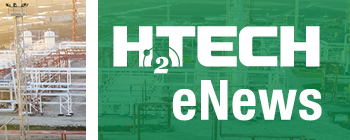News
ACER recommends flexible and transparent inter-temporal cost allocation to support H2 investments
ACER published its first recommendation on inter-temporal cost allocation mechanisms for financing hydrogen infrastructure. To ensure the recommendation is well-informed, ACER conducted a public consultation on the topic in spring 2025.
What is inter-temporal cost allocation and why an ACER recommendation?
The EU aims to build a cost-effective hydrogen network to meet its climate goals. However, high infrastructure costs and demand uncertainty pose significant investment challenges, especially in the early stages of market development.
To address this issue, the EU Hydrogen and Decarbonized Gases Regulation (2024) grants Member States the authority to allow hydrogen network operators to recover infrastructure costs gradually over time through inter-temporal cost allocation mechanisms. These aim to ensure a fair and balanced distribution of costs between early and future consumers, ensuring that the former are not disproportionately burdened.
The regulation also assigns new hydrogen-related tasks to ACER, including issuing a recommendation to guide the development and implementation of inter-temporal cost allocation mechanisms. ACER’s Recommendation provides practical advice to support the rollout of hydrogen networks and ensure fair cost-sharing over the long term.
What does ACER recommend?
ACER’s Recommendation identifies key investment risks in hydrogen infrastructure and suggests ways to address them. It offers high-level guidance on designing fair and effective inter-temporal cost allocation mechanisms to support the development of the hydrogen market. ACER also highlights the need for Member States to promptly establish clear hydrogen regulatory frameworks and develop flexible national rules to accommodate the future EU-wide hydrogen network codes.
Given the early stage of the hydrogen market and the lack of established best practices, ACER does not yet propose a single, standardized EU-wide approach. Instead, it calls for:
- Regulatory authorities to:
- Ensure that inter-temporal cost allocation mechanisms and national market rules are developed in a coordinated manner
- Strengthen cross-border coordination to avoid market fragmentation in the initial stage of the hydrogen market
- Establish clear and robust mechanisms that guarantee full cost recovery and fair cost distribution over time to support market growth.
- Network operators and planning bodies to:
- Ensure hydrogen network development is based on transparent, data-driven and realistic assumptions.
What are the next steps? ACER will review and update its Recommendation at least every two years, incorporating more refined guidance as the market evolves. The next publication is planned for 2027.

